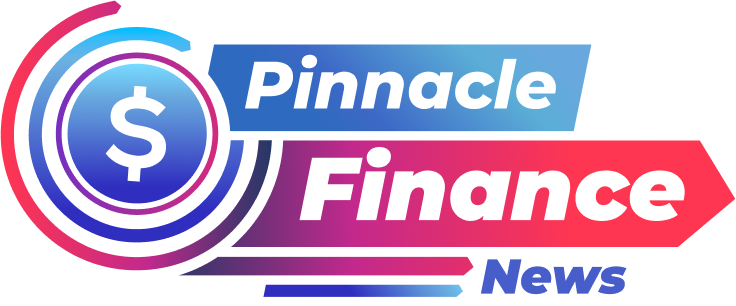
Novo Nordisk on Wednesday reported first-quarter earnings that beat expectations, driven by continued demand for its blockbuster obesity drug Wegovy, even as surging competition from US drug compounders prompted the Danish pharmaceutical giant to cut its full-year sales outlook.
The maker of Wegovy and diabetes drug Ozempic said net sales in the first quarter rose 18% to 78.09 billion Danish kroner ($11.15 billion), slightly below analysts’ estimates.
Sales of Wegovy jumped 83% from a year earlier to 17.36 billion kroner. However, the figure fell short of the 18.51 billion kroner forecast in a FactSet poll.
The company lowered its full-year sales growth forecast to between 13% and 21% at constant exchange rates, down from a previous range of 16% to 24%.
Operating profit growth is now projected at 16% to 24%, versus the prior 19% to 27%.
Novo’s CEO, Lars Fruergaard Jørgensen, blamed the downgrade on the rapid rise of compounded alternatives in the United States.
“Compounders took a part of our business away,” Jørgensen said in an interview with CNBC, referring to US-based pharmacies that mix and sell their own versions of semaglutide, the active ingredient in Wegovy and Ozempic.
“We now expect that compounding will be knocked off, so to say, and we get that business growth going forward.”
Shares of the company were up nearly 6% in London on Wednesday morning following the earnings announcement and optimistic commentary from management.
Invezz takes a look at how a shortage of obesity drugs created a multi-billion dollar industry of its compounded copycats.
Source: Bloomberg
Compounders take a bite out of brand-name sales
For over two years, Novo Nordisk and Eli Lilly have been grappling with a surge in compounding, an old pharmaceutical practice that became a multibillion-dollar industry after the FDA declared shortages of GLP-1 drugs like Wegovy and Zepbound in 2022.
That ruling allowed pharmacies to produce semaglutide-based treatments independently, often at a fraction of the price.
Some patients reportedly paid under $200 per month for compounded versions.
Eli Lilly and Novo Nordisk now typically charge around $500 per month for their brand-name weight-loss drugs to patients paying out of pocket instead of using insurance, but until recently, patients had to pay as much as $1,300 a month.
Compounded medications do not undergo clinical trials or FDA approval and are considered to carry a higher risk, though some providers insist they meet safety and quality standards.
Novo and Lilly have been under pressure as telemedicine platforms and medical spas capitalized on the demand, with companies like Hims & Hers reporting over $225 million in revenue tied to weight-loss offerings, primarily from compounded drugs.
Last month, Eli Lilly sued four compounding pharmacies, alleging they sold unauthorised products containing tirzepatide, the active ingredient in its blockbuster diabetes and weight-loss drug Mounjaro.
Booming market, murky oversight
The rise of Ozempic marked a turning point for compounding pharmacies, drawing in more patients, revenue, and attention than ever before.
This booming business took off in 2022 after the FDA declared a shortage of drugs from Novo Nordisk and Eli Lilly.
Under federal law, compounding is permitted during such shortages or when a patient’s needs cannot be met by commercially available medications.
In many cases, even those with diabetes turned to compounders due to the lack of availability of the branded options.
Compounded drugs are typically made by mixing active pharmaceutical ingredients, usually imported in powder form from China, with additives like sterile water and stabilizers.
These drugs bypass the rigorous FDA approval process and clinical trials, which have raised safety concerns.
While the FDA does regulate compounding, oversight is limited.
The agency’s compounding division is small and has long lacked the resources to keep pace with the explosion in demand, leading to what critics call insufficient enforcement.
Despite this, compounders insist their products are safe.
A trade group representing large compounding pharmacies estimates millions of Americans are currently receiving weight-loss treatments through compounding, potentially rivalling the market share of brand-name drugs.
Will FDA’s crackdown really end compounding?
In February, the FDA declared the drug shortages over and set deadlines for compounders to cease production.
Small pharmacies had until April 22 to stop offering compounded Wegovy; larger compounders have until May 22.
“Following the US FDA removal of semaglutide injectables from the FDA drug shortage list, the sales outlook assumes a reduction in patients on compounded GLP-1 treatment during the second half of 2025,” Novo said.
The company has also reiterated its intention to pursue legal action against compounders that continue to distribute copycat versions of its products unlawfully.
While the FDA’s move is expected to reduce compounded drug sales significantly, experts say enforcement challenges remain.
“We’re about to see just how creative the compounding industry can get,” said Lindsay Allen, a health economist at Northwestern University, in a New York Times report, noting that some compounders are already exploring ways to tweak formulations to evade crackdowns.
While Novo Nordisk remains confident that branded sales will recover as regulatory pressure mounts on compounders, industry watchers caution that the market for unapproved versions of weight-loss drugs may not vanish entirely.
Some compounders are already altering doses or adding vitamins in a bid to exploit legal gray areas, raising questions about how effective the FDA can be in curbing the practice.
The post How copycats of Wegovy, Zepbound created a billion-dollar market appeared first on Invezz






